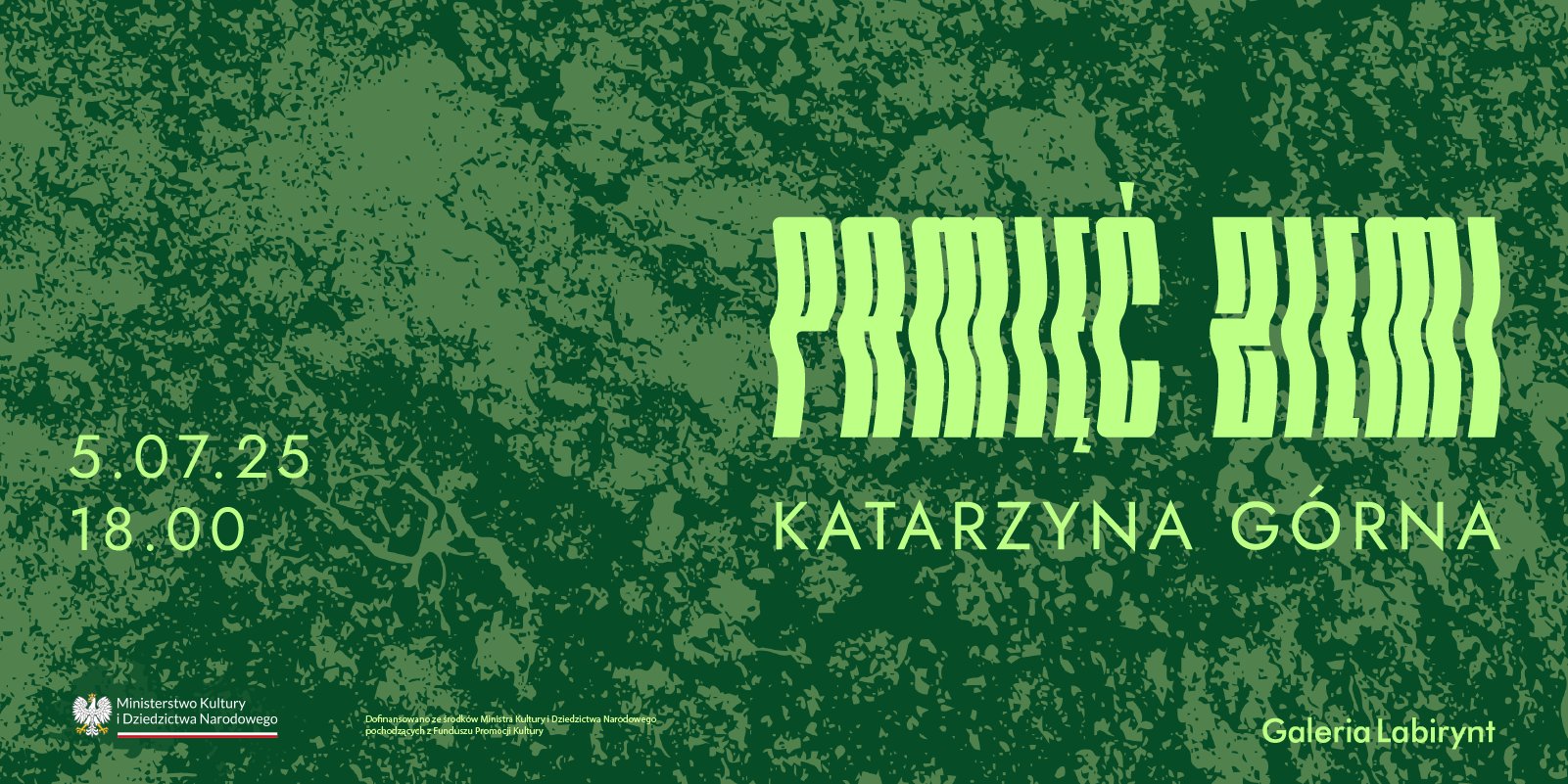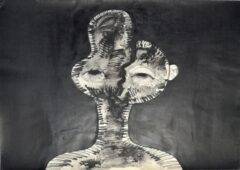„Olbrzymka” Natalii Wiśniewskiej w CSW Kronika / ”Giantess” by Natalia Wiśniewska at CSW Kronika
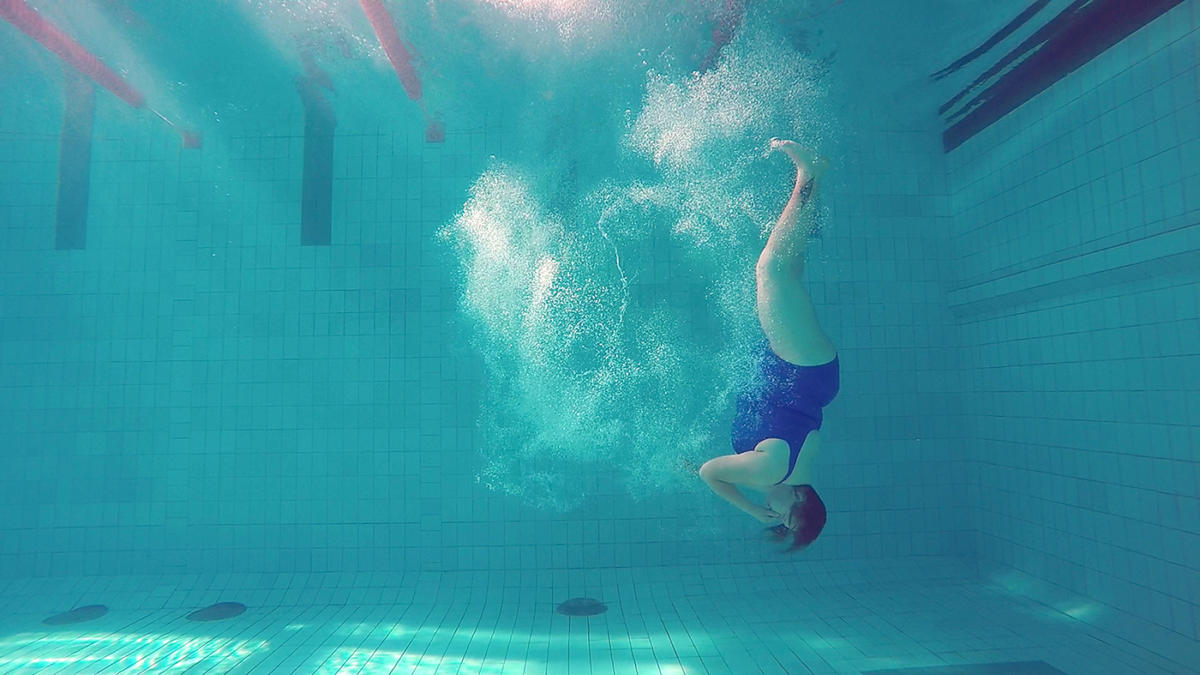
For English version scroll down
PL
Ciało zanurzone w cieczy traci pozornie na ciężarze tyle, ile waży ciecz przez nie wyparta. Nurkująca w basenie Marta nie waży prawie nic: jej lekkie ciało porusza się swobodnie. To jedyna sytuacja, w której może wyzwolić się na chwilę z więzów obowiązującej narracji kulturowej, w której odbieganie od normy, czyli każdy dodatkowy kilogram, traktowany jest jako skandal – co zmusza ją do ciągłej korekty, wymazywania wad, pozbywania się nadmiaru i dostosowywania do panujących wzorców. W świecie ponowoczesnym, jak wskazuje Zygmunt Bauman, „pogoń za sprawnym ciałem jest stanem ciągłej autolustracji, ciągłych samooskarżeń i samopotępień, a co za tym idzie – nieustannego niepokoju.”
Po wyjściu z wody Marta waży 172 kg, a powierzchnia jej skóry wynosi 326 cm². Jej cierpiące na otyłość olbrzymią ciało rozpoczyna restrykcyjny proces odchudzania połączony z chirurgiczną resekcją żołądka. Proces obserwuje i rejestruje artystka wizualna Natalia Wiśniewska. Co ciekawe, idea przeniesienia działania w pole sztuki zrodziła się z inicjatywy tytułowej Olbrzymki – to ona zwróciła się do artystki z propozycją rejestracji zmian jakie zachodzić będą zarówno w jej ciele, jak i sferze psychicznej. Podczas comiesięcznych spotkań następuje dokumentacja, skrupulatne odnotowywanie postępów, ale pojawia się też efekt uboczny: między dwiema kobietami zacieśnia się więź.


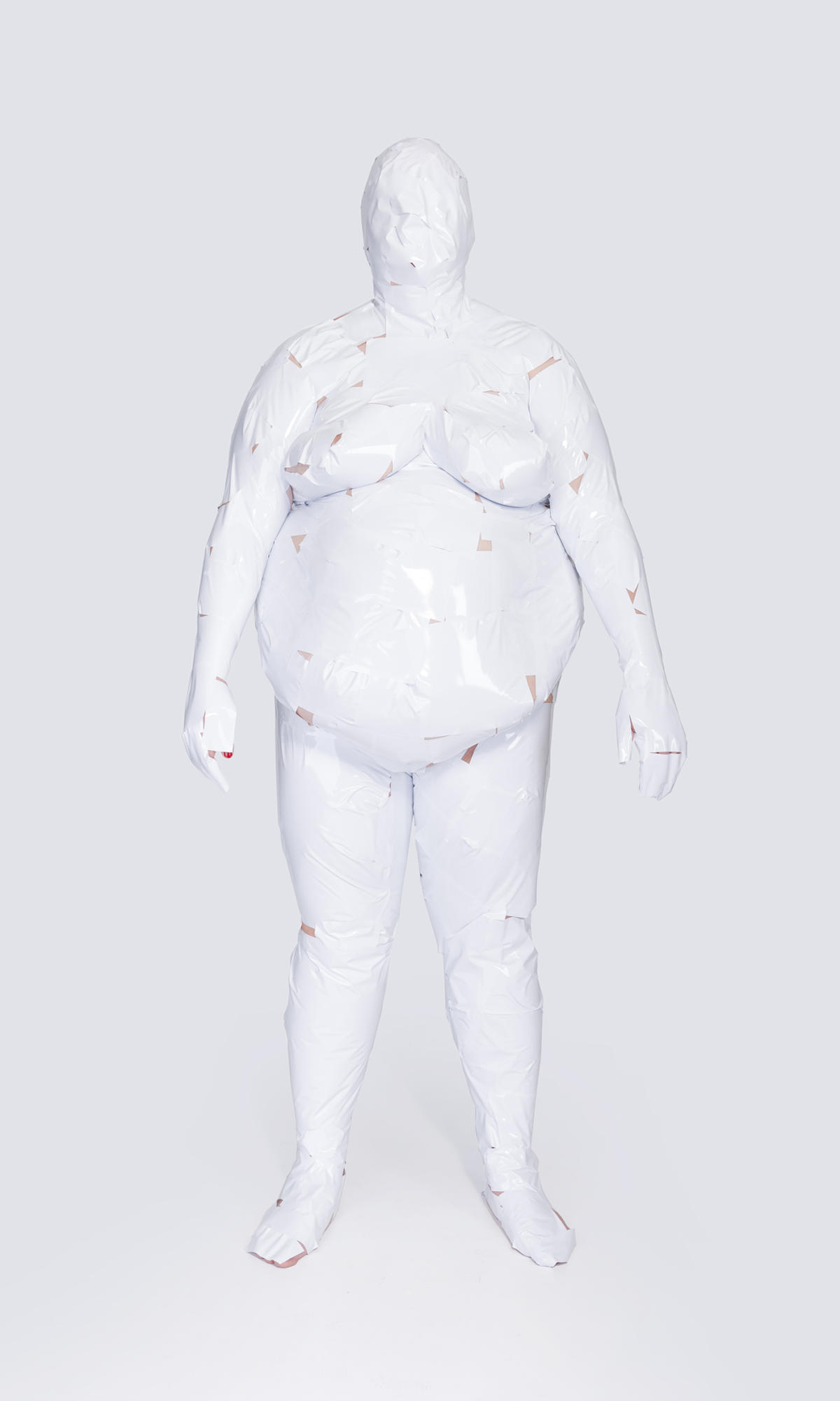



Jak mówi Wiśniewska: „Ta osobliwa oferta wynikała z potrzeby zmierzenia się ze swoim największym wrogiem jakim jest własne ciało. Fakt zwrócenia się Marty do mnie, potraktowanie sztuki nie tylko jako medium do opowiedzenia o swoim ciele/problemie, ale jako narzędzie do rehabilitacji swojego statusu społecznego, stanowi dla mnie zarówno punkt wyjścia, jak i docelowy sens realizacji tego projektu.” Długofalowe działanie z Martą artystka traktuje jako teren badawczy, który wyznaczają pojęcia: ciężaru – nie tylko fizycznego, ale też rozumianego jako trudność codziennego funkcjonowania, balansu – również społecznego, strefy komfortu, wykluczenia, ale także roli artysty wobec realnego problemu i wspieranie zmian wiążących się z socjalizacją osób wykluczonych.
Dzięki uczestniczeniu w projekcie i odważnej prezentacji w przestrzeni galeryjnej Marta odzyskuje widzialność; pokazanie jej w dosłowny, momentami wręcz naturalistyczny sposób jest próbą oswojenia tego, co zepchnięte, bo niewygodne. Okazuje się, że również atypowe ciało jest przedstawialne. Pojawia się tu jednak wątek dostosowywania. Dlaczego Marta nie mówi prowokacyjnie: bądźcie jak ja lub miejcie to w dupie, tylko walczy ze swoim ciałem? Ponieważ na tym polega istota kontroli społecznej, regulacji zachowań, również w sferze cielesnej. Człowiek zachowuje się konformistycznie poprzez instynkt społeczny, który dąży do zaspokojenia potrzeby przynależności grupowej. A każde niedopasowanie do określonych norm powoduje dyskomfort, interpretowany jako przejaw słabości.
Obecnie mamy do czynienia z tendencją do postrzegania ciała jako materiału plastycznego kształtowanego według siły woli: aby je zmienić wystarczą dobre chęci. Masz problem z nadwagą? – schudnij! Nie możemy wybrać rasy czy płci, ale według zachodniej kultury możemy zmienić swój rozmiar. Podejście to jest ściśle powiązane z neoliberalną ideologią, według której to jednostka ponosi odpowiedzialność za swój stan fizyczny. A nadmiar ciała jest traktowany jak śmiertelne zagrożenie, o otyłości nie mówi się dzisiaj inaczej niż w tonie katastroficznym: mamy więc do czynienia z epidemią, błyskawicznie rozprzestrzeniającą się zarazą XXI wieku, groźną chorobą cywilizacyjną itd. Osoby otyłe są postrzegane jako apatyczne, bezsilne, leniwe, nie cieszące się szacunkiem społecznym. Statystyki pokazują, że mają one większe trudności ze znalezieniem pracy czy wynajęciem mieszkania, mniej zarabiają, prowadzą uboższe życie towarzyskie. Granice akceptacji społecznej otyłości kurczą się. Marta, zmuszona przez szereg czynników do zmiany, podejmuje wyzwanie. Okazuje się jednak, że jest to proces żmudny i bolesny – odbiegający od jego medialnego wizerunku znanego z reklam specjalistycznych klinik czy wyszczuplających medykamentów. Trudności obrazuje między innymi prezentowana na wystawie tabela pomiarów, mająca obrazować postępy w chudnięciu, które w pewnym momencie stanęły w miejscu. Jak bardzo trzeba się poświęcić, aby uzyskać upragniony cel – normalność? Czy trzeba będzie powtórzyć operację? W jakim momencie będzie można powiedzieć, że proces jest zakończony, a cel osiągnięty? Co wtedy stanie się z Olbrzymką?






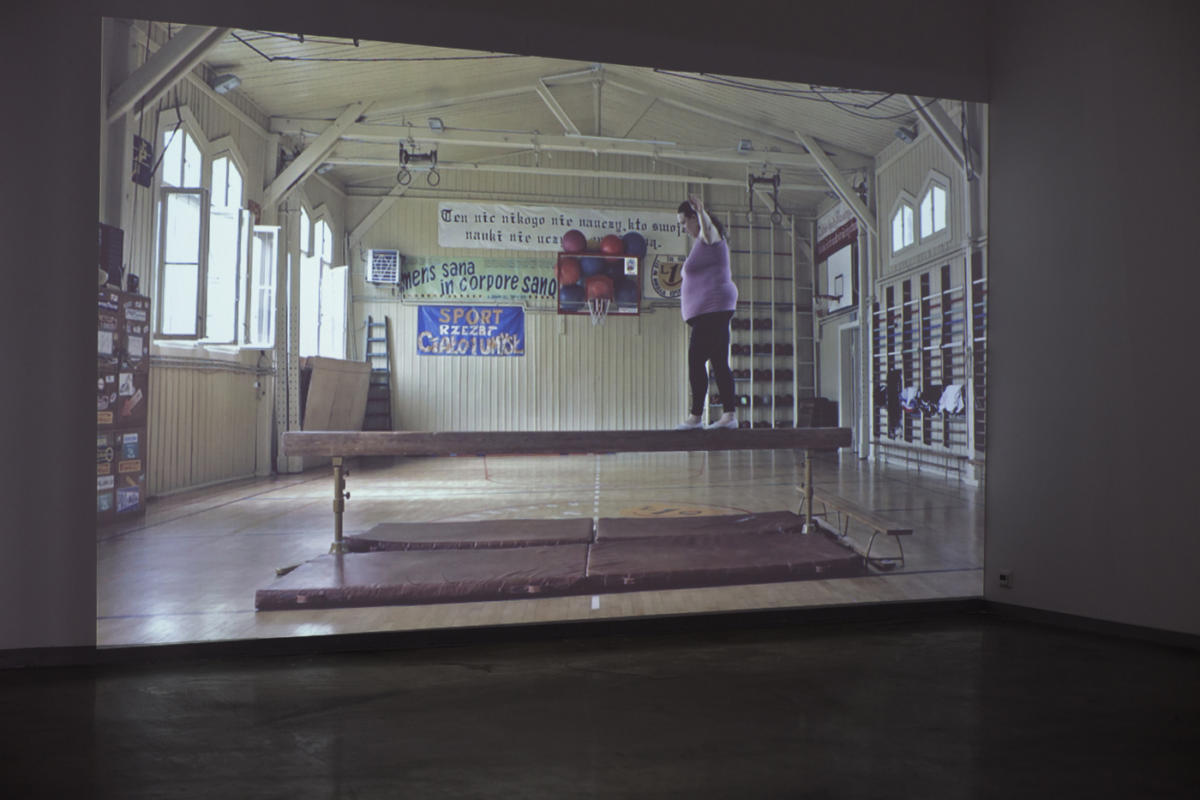



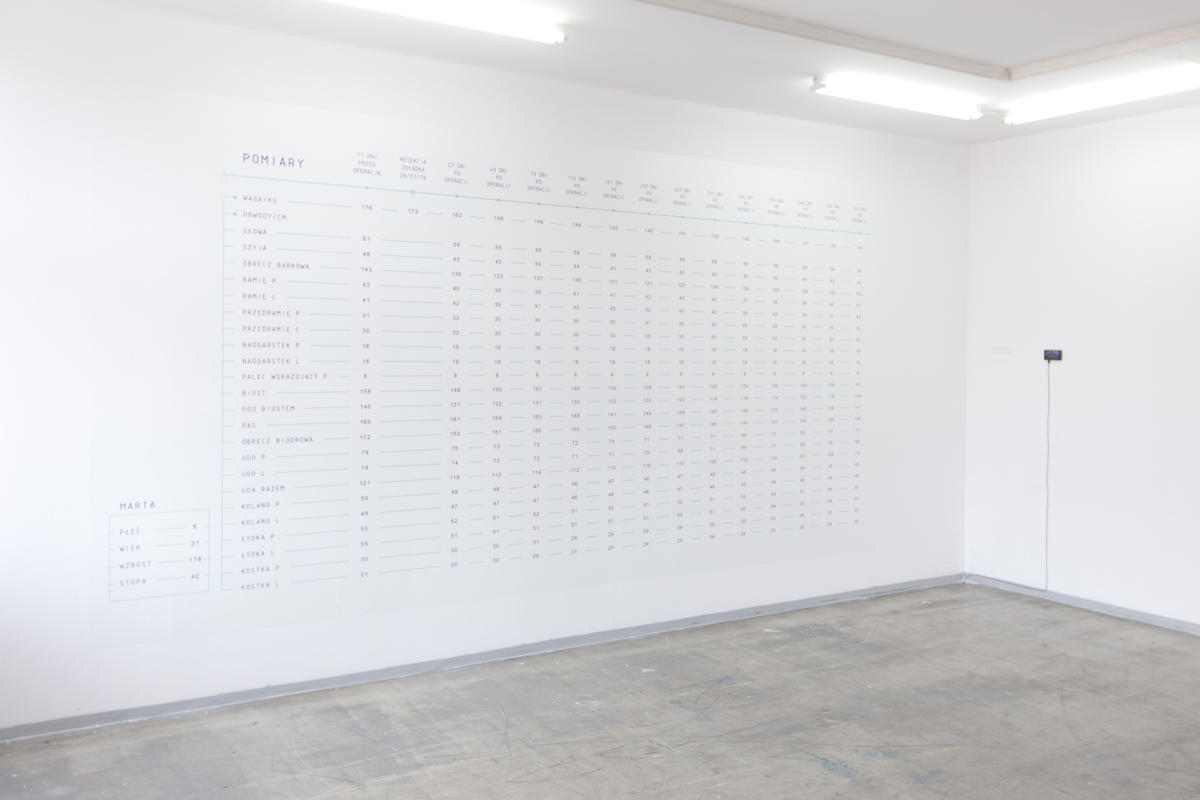

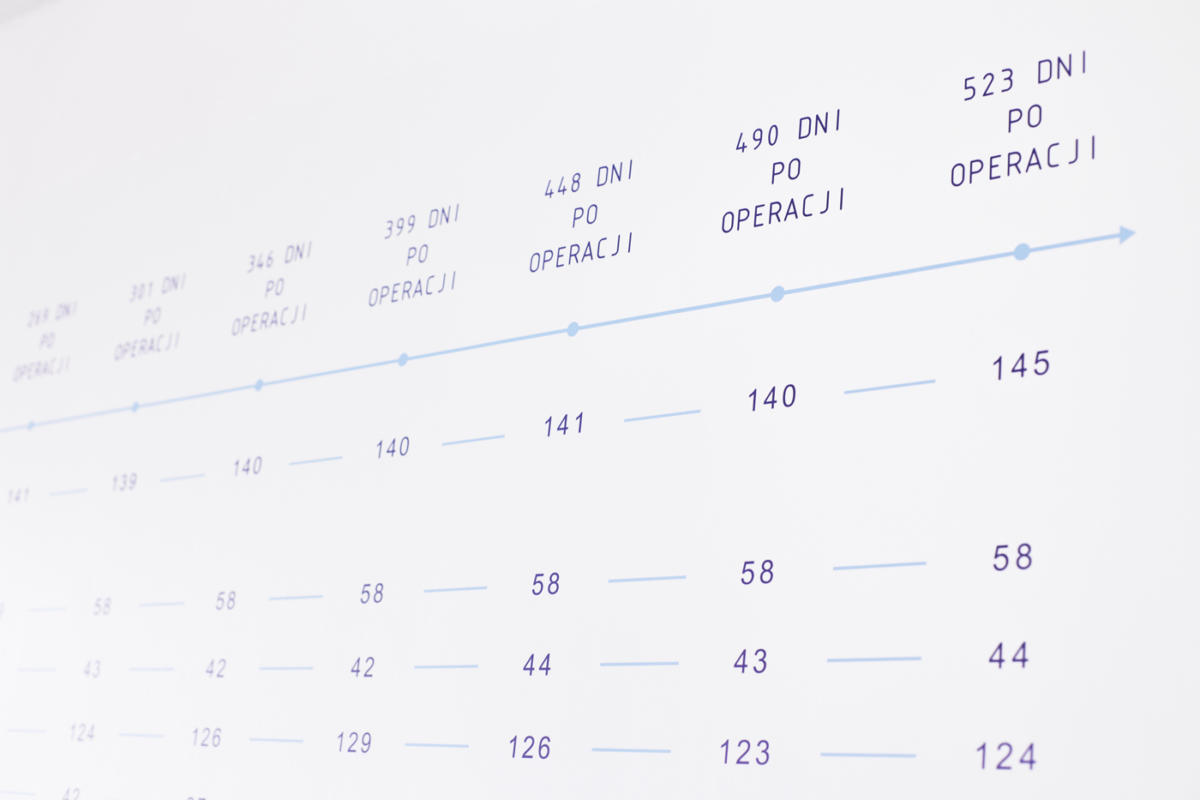



ENG
When a body is immersed in a fluid, it experiences an apparent loss in weight that is equal to the weight of the fluid displaced by the body. Diving in a swimming pool, Marta does not weigh almost anything at all: her light body moves freely in the water.
It is the only situation where she can release herself for a moment from the confines of the dominant cultural narrative, in which any deviation from the norm, every extra kilogram, is perceived as something scandalous – which compels her to make incessant corrections, erase the defects, get rid of excessive weight and adjust to the prevailing models. In the postmodern world, as Zygmunt Bauman remarks, “The pursuit of fitness is the state of perpetual self-scrutiny, self-reproach and self-deprecation, and so also of continuous anxiety.” When out of water, Marta weighs 172 kg and the surface of her skin is 326 cm². Suffering from super obesity, her body begins a rigid process of losing weight combined with a surgical procedure of gastrectomy.
The process is observed and recorded by the visual artist Natalia Wiśniewska. Interestingly enough, the idea to transfer it into the field of art originated from the eponymous Giantess – it was her who approached the artist to offer her the possibility to record the changes that were about to occur both in her body and in her psyche.
Their monthly meetings involve documentation and meticulous record of the achieved progress, but they also have a side effect to them: a bond that develops between the two women. As Wiśniewska says: “That peculiar offer originated from the need to confront the greatest enemy, which is one’s own body. The fact that Marta approached me, the use of art not only as a medium through which to talk about one’s body/problem, but also as a tool of rehabilitation of one’s social status, is for me both the starting point and the ultimate sense of the project.” The artist sees her long-term project with Marta as a field of research delineated by the notions of weight – not only physical, but also understood with regard to difficulties in day-to-day functioning, balance – also in social terms, comfort zone, exclusion, but also the role of the artist in the face of a real problem and supporting changes related to the socialisation of excluded individuals.


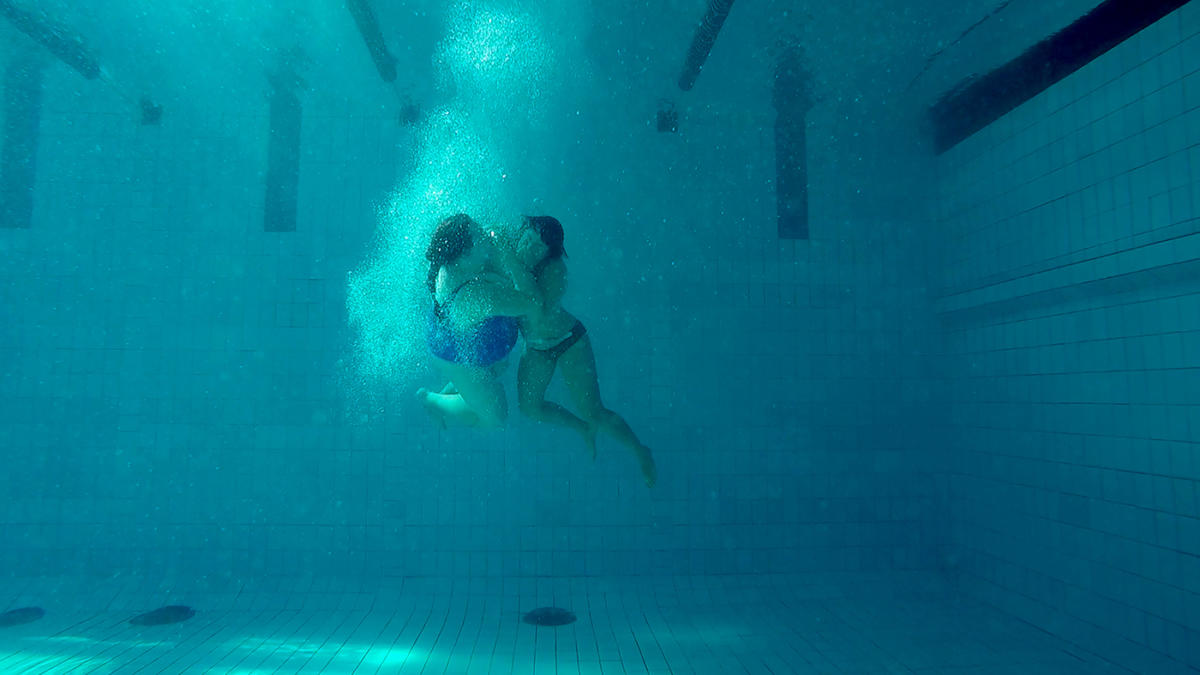

Owing to the participation in the project and a bold presentation in the gallery space, Marta regains visibility. Her straightforward, sometimes even naturalistic, depictions mark an attempt to tame what we repress because it leaves us uncomfortable. It suddenly turns out that also an atypical body can become an object of representation. Yet, what also emerges is the theme of adjustment. Why cannot Marta just say: be like me or don’t give a damn about it, but she fights with her own body? Because this is the essence of social control, regulation of behaviour, also with regard to the body. The human being behaves in a conformist way also due to social instinct, which strives to satisfy the need of group belonging. And every deviation from specific norms causes discomfort, which is in turn interpreted as a symptom of weakness.
We are currently seeing a tendency to perceive the body as a malleable material shaped with willpower: your will is all you need to change it. You are overweight? – lose weight! We cannot choose our race or sex, but according to the Western culture, we can modify our size. This approach is closely intertwined with neoliberal ideology, according to which it is the individual who bears responsibility for their own physical state. And excessive body weight is treated as a deadly threat. Obesity is discussed nowadays exclusively in a catastrophic spirit: accordingly, we are witnessing and epidemic, a rapidly spreading plague of the 21st century, a dangerous civilizational disease, etc. Obese individuals are perceived as apathetic, powerless, lazy and they are denied social respect. According to statistical data, they have more difficulty finding a job or renting a flat, they earn less, their social life is poorer. The borders of social acceptance of obesity are shrinking. Forced to make a change by a range of factors, Marta accepts the challenge. Yet, the process turns out to be arduous and painful – unlike its media image known from advertisements of specialised clinics or slimming medication. The difficulties are depicted, among other means, by a measurement table presented in the exhibition, which is supposed to indicate progress in losing weight, progress that stalls at a certain point. How much sacrifice is needed to achieve the desired goal – normality? Will the surgery need to be repeated? When can the process be deemed concluded and the goal achieved? What will the happen with the Giantess?
Przypisy
Stopka
- Osoby artystyczne
- Natalia Wiśniewska
- Wystawa
- Olbrzymka
- Miejsce
- CSW Kronika, Bytom
- Czas trwania
- 19.08.2017 – 23.09.2017
- Osoba kuratorska
- Agata Cukierska
- Fotografie
- Marcin Wysocki
- Strona internetowa
- kronika.org.pl

